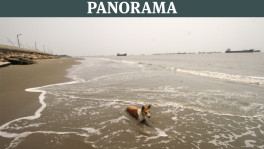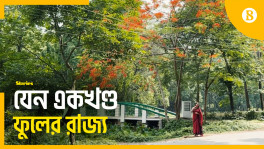Land acquisition was the biggest challenge
Dohazari Cox's Bazar Railway Project Director Md Suboktogin engages in an insightful interview with The Business Standard, shedding light on the progress of the project, the challenges and delays it faced, and the impact it will have on the region's and the country’s economy

Cox's Bazar is finally becoming the 47th district to integrate into Bangladesh's expanding railway network.
Over 100km of new railway tracks have been constructed at a cost of about Tk18,000 crore. Under the project, the construction of nine new stations in Dohazari, Satkania, Lohagara, Harbang, Chakaria, Dulahazra, Islamabad, Ramu, and Cox's Bazar is underway.
The project was approved on 6 July 2010. However, it was delayed for six years due to financial complications. On 19 April 2016, the project was revised and approved again. It was then included as a fast-track project.
The project work was split into two lots and commenced in July 2018.
China Railway Engineering Corporation and Tama Construction Company of Bangladesh are collaborating on the construction of a 50km railway track between Dohazari and Chakaria, including the development of essential infrastructure such as five stations, under a Tk2,688 crore contract.
Besides, China Civil Engineering Construction Corporation (CCECC) and Max Infrastructure Limited of Bangladesh are constructing a 50km railway track and four stations along the Chakaria-Dulahazara-Cox's Bazar route, requiring the acquisition of 1,391 acres of land.
Project Director Engineer Md Suboktogin recently engaged in an insightful interview with The Business Standard, shedding light on the progress and significance of the railway project.
What was the biggest challenge in implementing the project?
Acquiring the necessary 1,391 acres of land for the project proved to be a significant undertaking, involving both privately owned land and reserved forest land. Securing approvals for land allotment from the highest levels of government was a time-consuming process.
The railway track's passage through the wildlife sanctuary within the forest necessitated careful design considerations to minimise disruption to wildlife movement.
A major challenge was the acquisition of vested property, lands transferred by the Hindu community during the 1965 war, for which there was no specific compensation law in place. The absence of clear compensation guidelines for houses on these properties further complicated the process, requiring frequent meetings with the Ministry of Land and ultimately obtaining their approval for compensation payments.
Additionally, the railway line's intersection with the Chakaria Khutakhali Ashrayan Project presented various complications that demanded careful attention and resolution.

How did you deal with the pandemic?
The pandemic significantly disrupted the construction of the railway project, causing delays and setbacks. The outbreak led to a labour shortage as many workers were forced to stay at home or relocate due to travel restrictions.
The pandemic brought about port closures worldwide, hindering the import of crucial materials like rail tracks from China and stones from Malaysia and India. This disruption in the supply chain further slowed down the project's progress.
The contractor company, being Chinese, relied on imported materials from its home country. The reliance on foreign suppliers made the project more vulnerable to global disruptions, as it was heavily dependent on external factors beyond our control.
What special materials have been used on this rail track?
The Cox's Bazar rail track is a state-of-the-art project that incorporates cutting-edge technologies and innovative design features. The rails are joined using flash welding, which produces a stronger and more durable joint than traditional methods.
To mitigate the effects of thermal contraction in winter, the project uses heavier rails (120 pounds per 3 feet) compared to the 75-pound rails used in older railway lines. This reduces the risk of rail joint failure caused by tension.
Another significant advancement is the introduction of a computerised signalling system, which replaces the manual system used in the past.
The Cox's Bazar railway station is designed to be an iconic landmark and a vibrant commercial centre. It will offer a wide range of modern amenities, including hotels, shopping malls, and restaurants. This multi-purpose station will be operated by the private sector, which is expected to generate revenue through commercial activities.
What international standards have been followed in constructing the wildlife overpasses or underpasses?
Wildlife movement was monitored for a long time using CCTV cameras, and this data has been used to identify key wildlife corridors and design passage structures accordingly.
Underpasses and overpasses have been constructed to allow wildlife to safely cross the railway line, and banana and bamboo trees, preferred by elephants, have been planted along the overpass to provide food and habitat.
Additionally, a total of 700,000 trees of 20 species, including fruit, forest, and medicinal plants, have been planned to be planted under the project, with 500,000 trees already having been planted. Some of the fruit trees planted 3-4 years ago are starting to bear fruit.
What kind of measures have been taken to protect the track from floods?
The main reason for the flood damage to the railway line was that the rails had only been laid, but not yet welded together or fitted with fittings. The ballast had also not been compacted, and the track bed was still open. In other words, the railway line was incomplete and vulnerable to flood damage.
To address this issue, 60 additional culverts and 243 bridge culverts are being constructed to improve drainage and reduce the risk of flooding.


 Keep updated, follow The Business Standard's Google news channel
Keep updated, follow The Business Standard's Google news channel
















